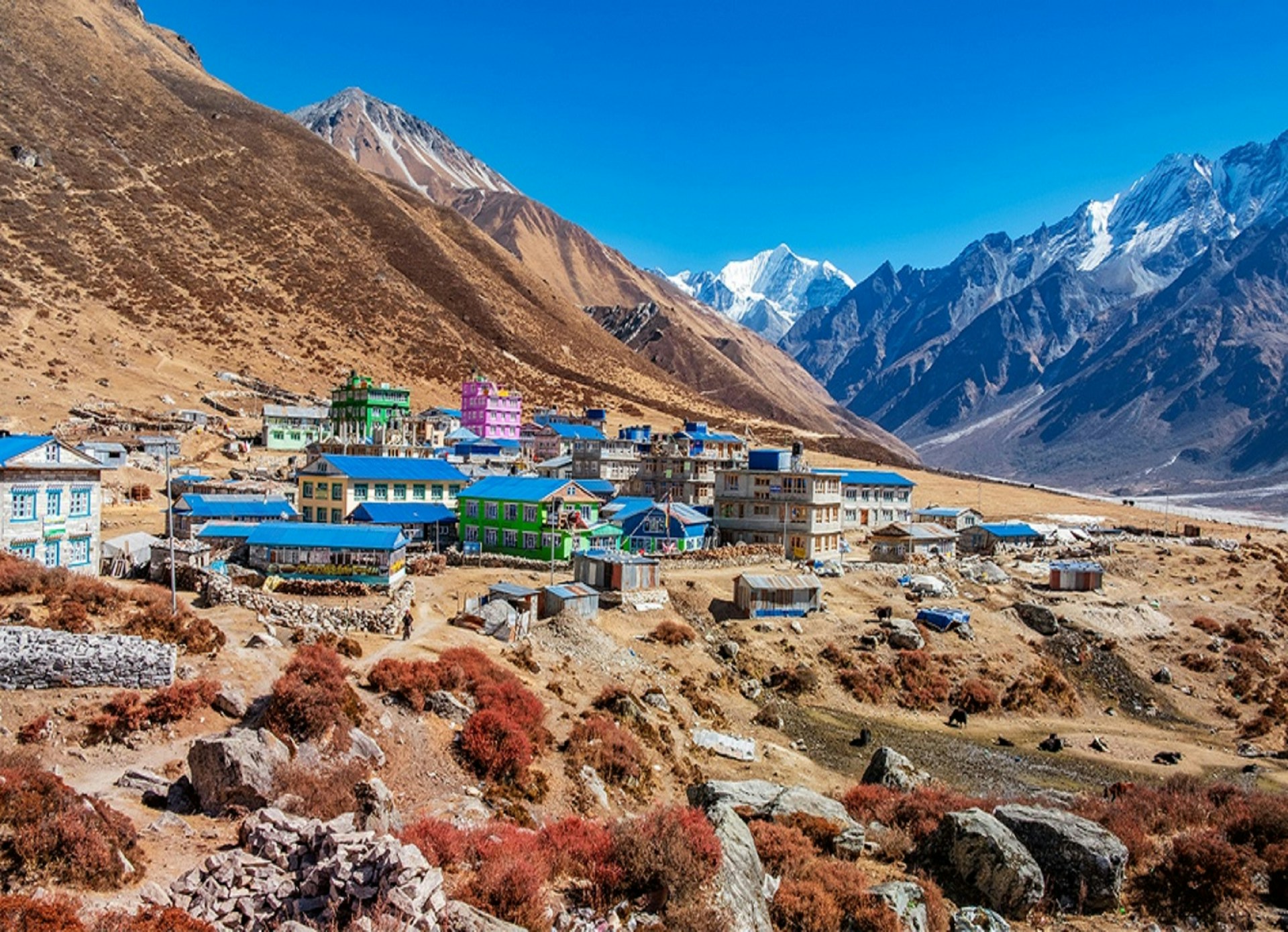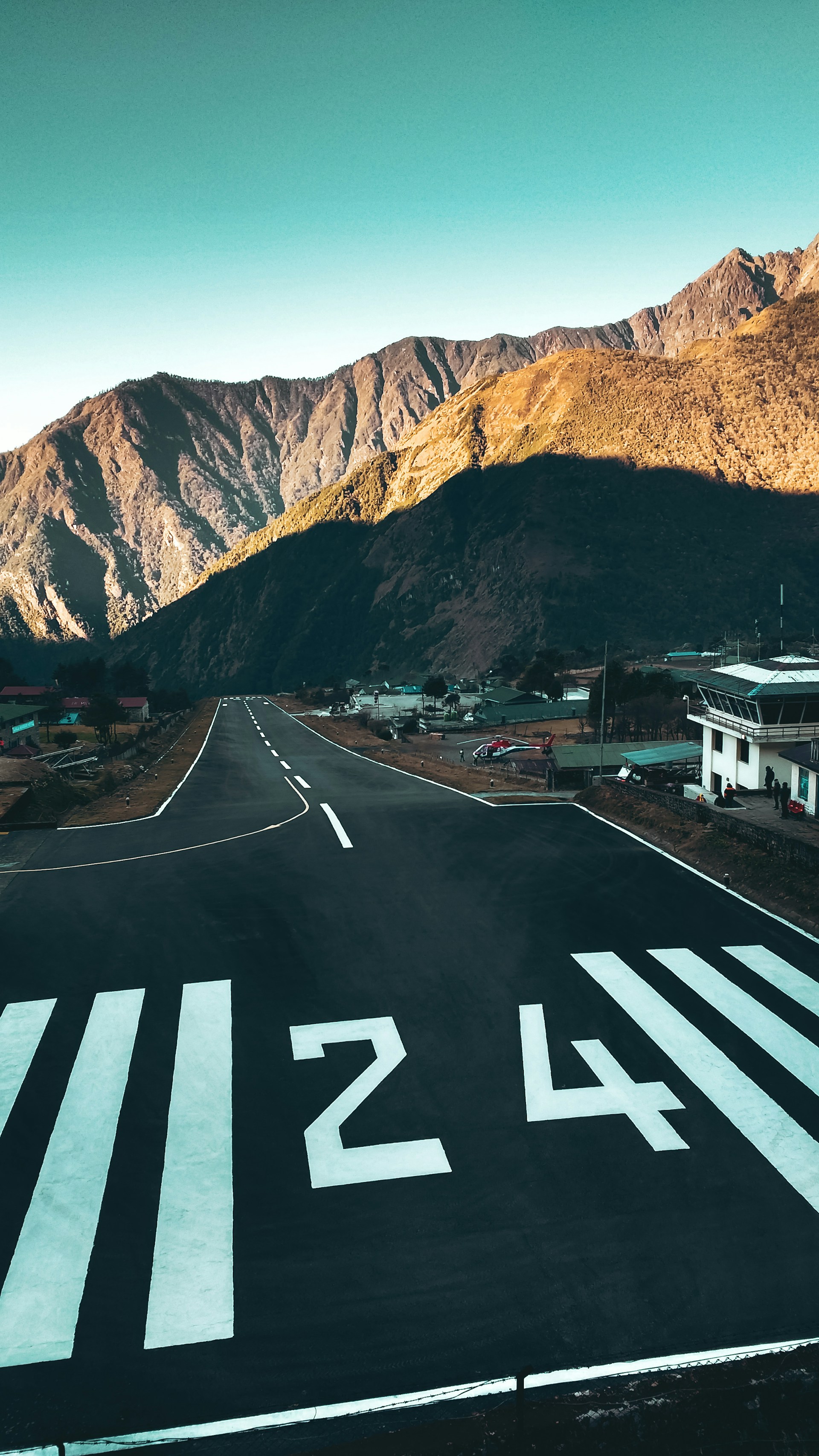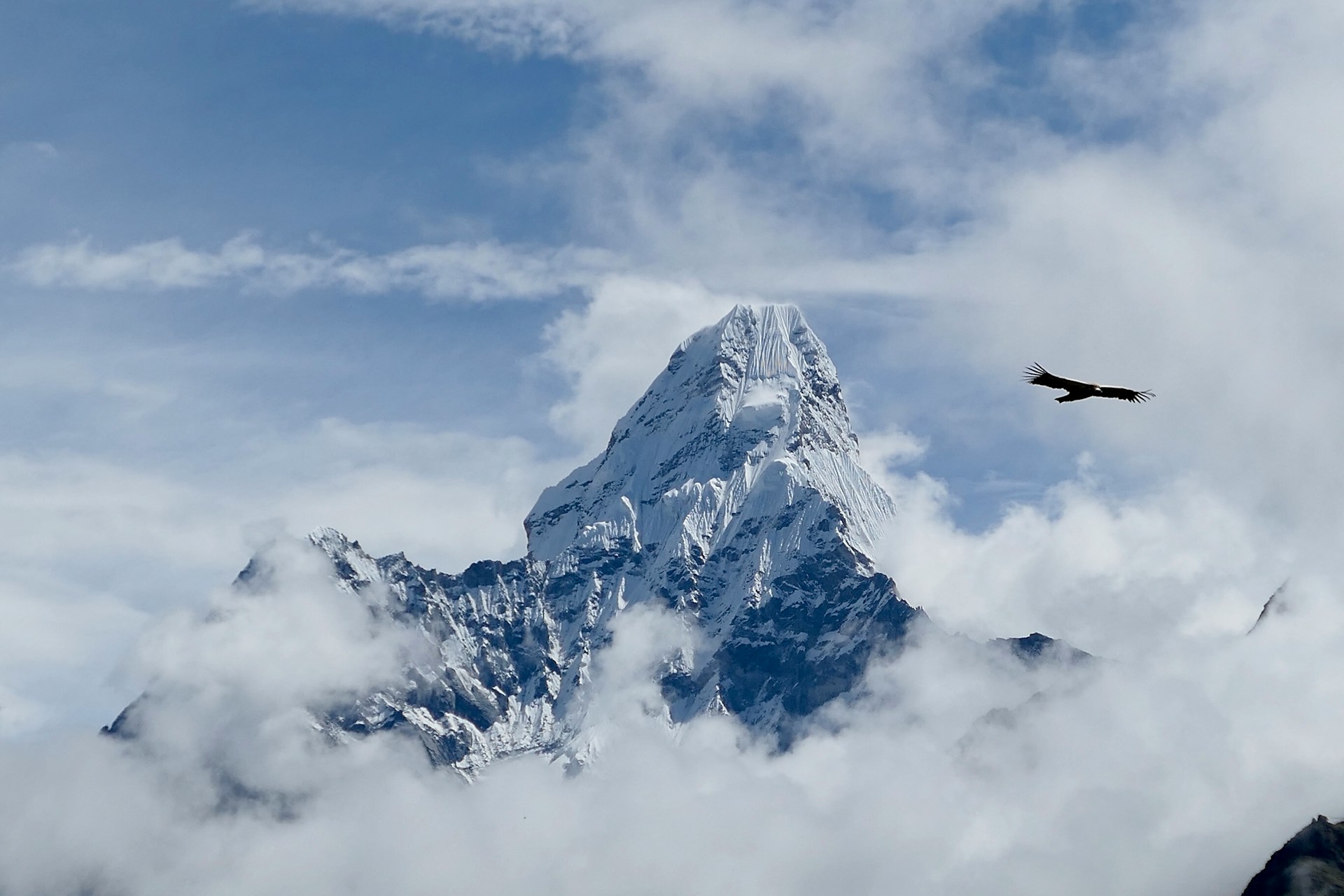Ultimate Guide to the Annapurna Base Camp Trek.
Annapurna Base Camp (ABC) trek is highly popular among trekkers in Nepal for its rich biodiversity, vibrant culture, and breathtaking mountain vistas. Ethnic communities along the route contribute to its unique charm. Teahouses, mostly managed by locals, enhance the trek with cozy accommodations, hearty meals, and captivating folk tales. This blend of mountains and local hospitality sets ABC apart from other treks in Nepal.
ABC has been a premier trekking destination for over two decades and remains a favorite today due to its accessibility and multiple entry and exit points. Despite road construction, alternative trails ensure a serene trekking experience. Natural hot springs add to the trek's natural allure.
This trek offers a diverse terrain, from lush rice terraces to rugged glacier moraines. The views of the world's highest Himalayas are truly awe-inspiring, complemented by the region's unique biodiversity. Home to the Gurkha indigenous tribe, ABC provides insights into their rich traditions, cuisine, and festive celebrations. Experience their way of life and create lasting memories on the Annapurna Base Camp trek. Book your adventure today with Vajra Adventure .
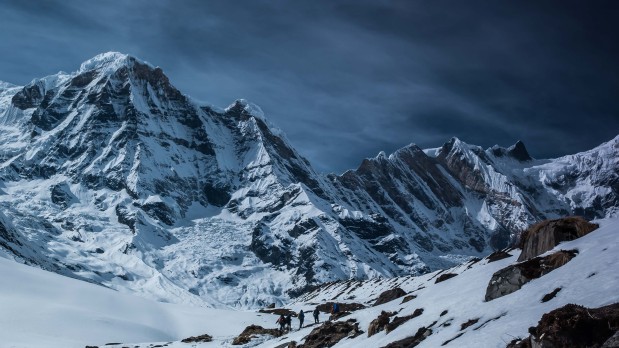
Immerse yourself in the stunning beauty of snowy mountains, showcasing nature's serene charm and majestic allure.
Annapurna Base Camp Trek: Key Information
- Annapurna Base Camp trekking is trekking to the base camp of the Annapurna South.
- Annapurna Base Camp trekking presents trekkers a chance to view the 10th highest mountain in the world, the Annapurna I.
- Panorama: Enjoy a 360-degree view of stunning mountains including Machhapuchhre (6993m), Annapurna III (7555m), Gangapurna (7454m), Singu Chuli (6501m), Annapurna I (8091m), Annapurna South (7219m), and Hiunchuli (6441m).
- During the Annapurna Base Camp Trek, trekkers can enjoy two base camps – a) Annapurna Base Camp and b) Machhapuchhre Base Camp.
- Route Options: Choose between a direct route to Annapurna Base Camp or a detour via Ghorepani-Poon Hill or Ghandruk, all converging at Chhomrong before heading to the base camp.
- If trekkers choose to take a detour to Ghorepani-Poon Hill, then trekkers can enjoy the second famous view point after Kala Patthar in the Khumbu region, the Poon Hill. The view of Machhapuchhre (6993M), Hiunchuli (6441m), Annapurna South (7219m), Baraha Sikhar (FANG) (7647M), Nilgiri South (6839M), Tukuche (6920m) and Dhaulagiri (8167m) are magnificent.
- During peak trekking seasons, the trails can get busy, so it may not be suitable for those seeking solitude.
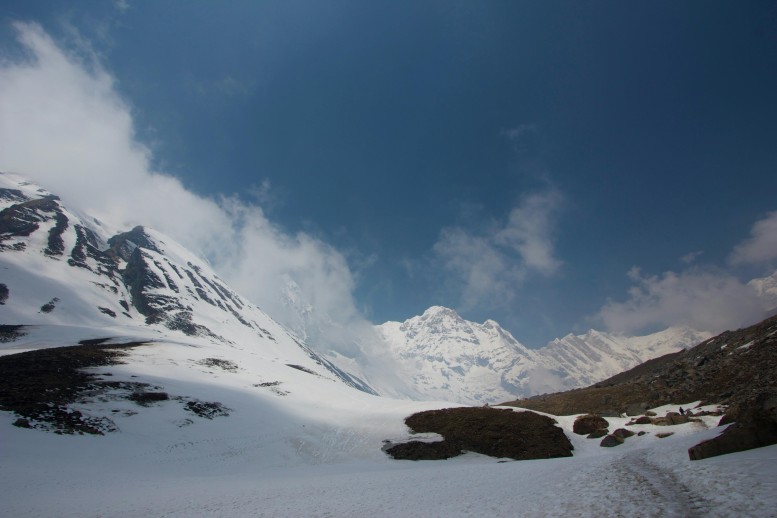
Experience the breathtaking beauty of snow-capped mountains, a perfect blend of serenity and grandeur in nature's masterpiece.
Highlights Of The Annapurna Base Camp Trekking
- Pokhara: Your adventure kicks off in Pokhara, Nepal's stunning "Lake City."
- Diverse Landscapes: Witness dramatic changes in scenery, from towering mountains to charming villages nestled in the foothills.
- Cultural Immersion: Meet the Gurung, Magar, and Thakali people. Experience their unique way of life, traditions, and warm hospitality.
- Panoramic Vistas: Poon Hill, Nepal's second-most famous viewpoint after Kala Patthar, offers breathtaking sunrises and sunsets painted across the Annapurna range, Dhaulagiri, and Machhapuchhre.
- Nature's Playground: Explore diverse ecosystems, from subtropical forests to alpine meadows. Look out for unique plants and animals.
- Charming Villages: Immerse yourself in the charm of Gurung, Magar, and Thakali villages like Ulleri, Ghorepani, and Ghandruk.
- Unique Stays: Opt for a homestay experience in Ghandruk, or visit the Gurung museum for a deeper cultural dive.
- Relaxing Soak: Unwind after your trek in the rejuvenating hot springs of Jhinu Danda.
- Stunning Scenery: Prepare to be captivated by the perfect blend of breathtaking mountains and the ever-changing landscapes.
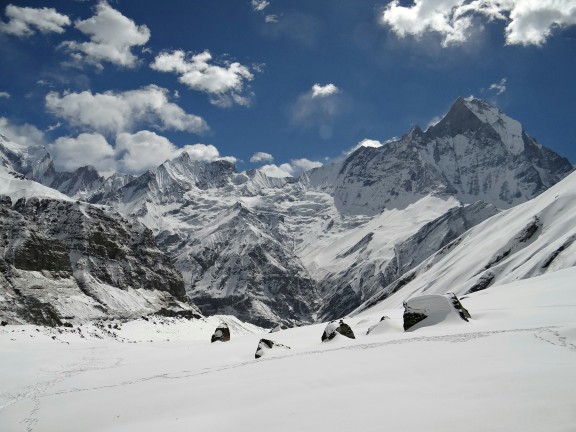
Admire the stunning view of majestic mountains under little cloudy skies, adorned with a pristine blanket of white snow.
Required Permits and costs for the Annapurna Base Camp trek
To trek to Annapurna Base Camp, you'll need certain permits and cards:
- ACAP Entry Permit: Since the base camp is within the Annapurna Conservation Area, both solo trekkers and groups must get an individual ACAP entry permit. You can apply with two passport-size photos. The fee is NPR 200 for SAARC Nationals and NPR 2,000 for others. Children under 10 don't need a permit. This permit allows entry only to designated areas and must be carried and shown at check posts.
- TIMS Card: A Trekkers’ Information Management System (TIMS) card is required for all trekkers. You can get a Green TIMS card for individual travellers ($20 equivalent in Nepali currency) or a Blue TIMS card for group travellers ($10 equivalent). You need a copy of your passport and two passport-sized photos to apply. TIMS cards are available at Nepal Tourism Board offices in Kathmandu and Pokhara, and TAAN offices in Maligaon and Pokhara.
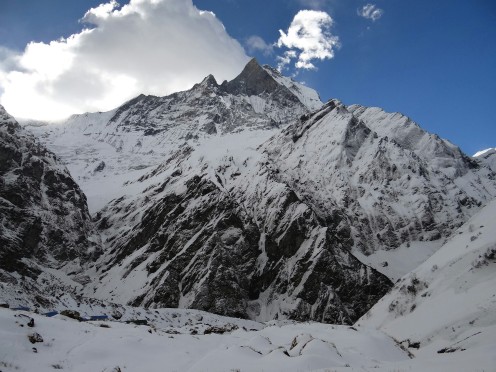
Explore the serene beauty of mountains blanketed in snow, offering a breathtaking view of nature's icy elegance.
Accommodation During The Annapurna Base Camp Trek
Accommodation options during the Annapurna Base Camp trek mainly consist of guest houses, basic lodges, and cosy tea houses. The rooms are typically simple with one or two beds and minimal furniture. Some accommodations offer attached bathrooms, while others have shared facilities. Hot showers may be available, or trekkers can request hot water for bathing at an additional cost. Despite their simplicity, the rooms are comfortable, providing a welcoming retreat after a day of trekking.
For a more immersive experience in local culture and lifestyle, consider arranging home-stays through your trekking company. This allows you to enjoy local food, traditions, and the warm hospitality of Nepali families along the trekking route. It's a chance to connect deeply with the community and make your trek even more memorable.
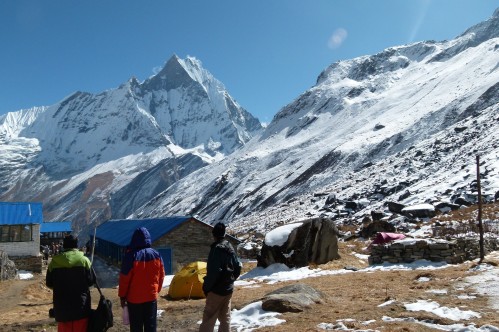
Discover the picturesque beauty of small houses nestled against the backdrop of towering snow-covered mountains, a serene village escape.
Transportation during the Annapurna Base Camp Trek
Nayapul is where most Annapurna Base Camp treks start, and you can reach there from Pokhara by local bus in about 2 hours. This journey offers glimpses of the lush countryside and the winding paths that lead deeper into the Himalayas.
For travellers originating from Kathmandu, there are several transportation options to reach Pokhara, the gateway to the Annapurna region. You can opt for a scenic 7-hour bus ride, which showcases Nepal's diverse landscapes along the route. Alternatively, a short and picturesque 20-25 minute flight offers a swift and breathtaking aerial perspective over the mountains.
From Pokhara, you can also choose to hire a private jeep or car to reach Nayapul, offering more comfort and flexibility, albeit at a higher cost. These options cater to different preferences, ensuring everyone can find a convenient way to start their trek to Annapurna Base Camp amidst Nepal's breathtaking scenery.
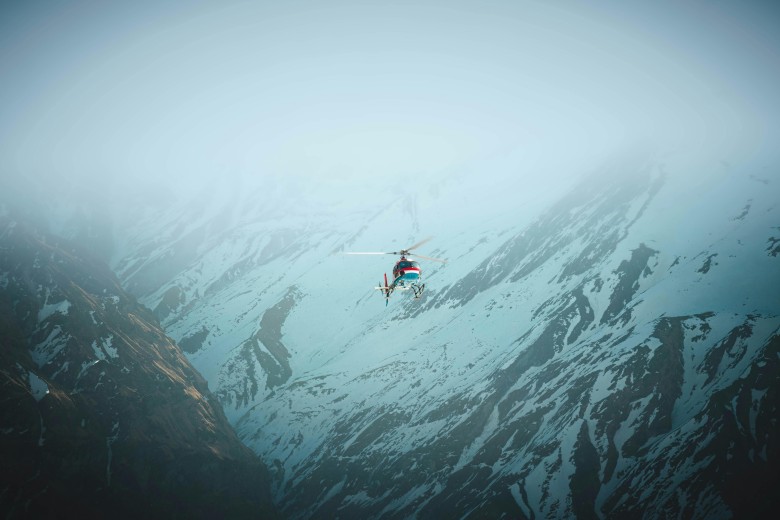
Capture the adventurous spirit with a helicopter navigating through pristine white snow and misty, fog-covered mountain peaks.
Food And Water During The Annapurna Base Camp Trek
Food and water are essential considerations for trekkers embarking on the Annapurna Base Camp trek. Here’s what you need to know about staying nourished and hydrated along the journey:
Food Choices
You'll eat mainly at teahouses and lodges on the trek. They offer a variety of meals like Nepali dal bhat (rice and lentils), pasta, and pancakes. Breakfast might include eggs, toast, and porridge. For lunch and dinner, there are soups, rice, noodles, and sometimes yak meat. They also have vegetarian and vegan options.
Drinking Water
It's crucial to drink safe water. Teahouses usually provide boiled or filtered water for a small fee. Bring a reusable water bottle to refill along the way. Avoid drinking water from streams or taps without treating it first, to avoid getting sick.
Snacks and Staying Hydrated
Pack snacks like nuts and energy bars for quick energy during breaks. Drink plenty of water—about 3-4 litres a day—to stay hydrated, especially at higher altitudes where dehydration can be a problem.
Cultural Meals
Some teahouses offer traditional Nepali meals. It’s a chance to try local food and learn about Nepali culture from the people who live there.
Eating and drinking well on the Annapurna Base Camp trek keeps you strong and healthy. Plan ahead and use the resources available along the trail to enjoy the trek and experience the local culture safely.
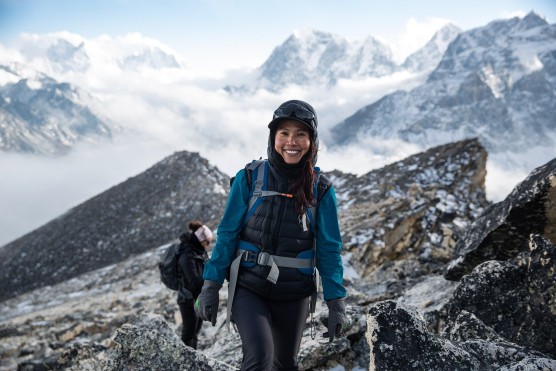
Experience the charm of a natural smile etched on the mountain, a unique and cheerful sight amidst the majestic peaks.
How Difficult Is the Annapurna Circuit Trek?
The Annapurna Base Camp trek is one of the easier and more popular treks in Nepal. Many people like it because it’s not too hard and the chance of getting altitude sickness is low. You need to be in good shape and able to walk for about 6-7 hours a day.
You don’t need previous trekking experience, but if you have done some hiking or camping, it will help. The path is clear and used by many trekkers, making it safer and more comfortable.
Weather in the mountains can change quickly, which can make the trek harder. Rain, snow, or strong winds can slow you down and make the trek less pleasant. Natural events like landslides or rockfalls can also happen and create problems on the trail.
Overall, if you prepare well and stay aware of the weather and trail conditions, the Annapurna Base Camp trek is a manageable and rewarding adventure. You will see beautiful views of the Himalayas, experience local culture, and feel the achievement of reaching the base camp.
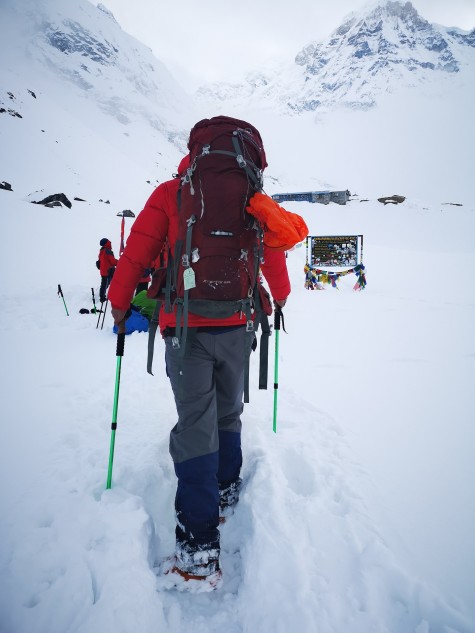
Join the adventure as trekkers make their way through snow covered mountain trails, surrounded by breathtaking landscapes and towering peaks.
Recommendation for Solo trekkers
Trekking solo to Annapurna Base Camp can be an incredibly rewarding experience, offering opportunities for personal growth, solitude, and a deep connection with nature. However, trekkers will also enjoy the company of others on the trail. We recommend trekking in a group for safety reasons. Solo trekkers can join existing groups, which is ideal for budget travellers concerned about safety.
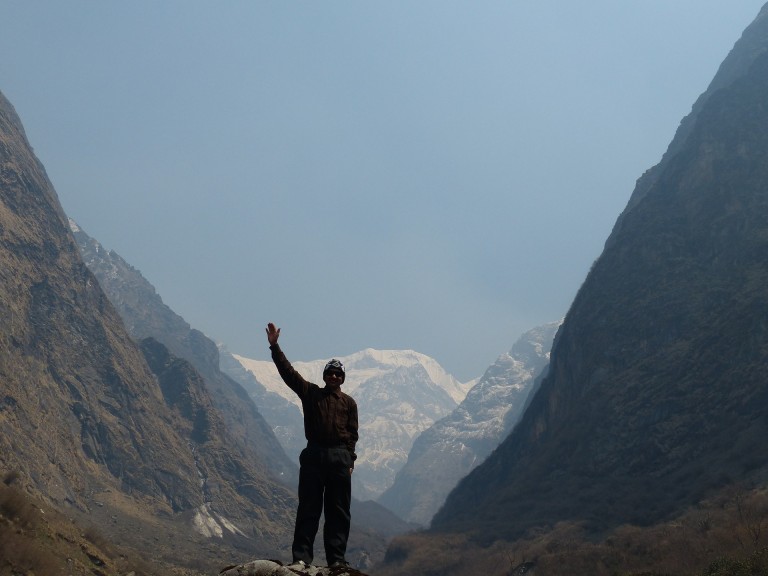
Experience the awe inspiring view of a man standing in the middle of two hills, with a towering mountain in the background, showcasing nature's grandeur.
Best Season To Plan The Annapurna Base Camp Trek
Spring (March to May) and autumn (September to mid-December) are considered the optimal seasons for planning the Annapurna Base Camp Trek. These periods offer favorable trail conditions, excellent visibility, and stable weather.
During the monsoon season, the trails become slippery and the views are often obscured by clouds and rain, making trekking challenging. In winter, the region experiences cold temperatures and snowfall, which can make the trek more difficult.
Choosing to trek in either spring or autumn ensures a safer and more enjoyable experience, with clearer skies and more manageable trail conditions.
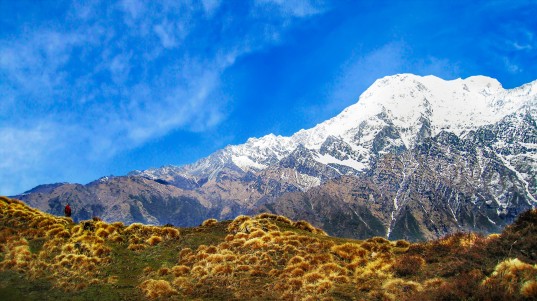
Marvel at the expansive view of towering mountains with a vast open ground in the foreground, offering a perfect blend of nature's beauty and serenity.
How long is the Annapurna Base Camp Trek?
The Annapurna Base Camp Trek typically takes between 7 to 12 days to complete, depending on your walking speed and the specific route taken. It's possible to extend the duration by adding side trips or opting for longer routes. The total length of the trek is approximately 80 kilometers (50 miles). Before embarking on the trek, it's important to be in good physical condition as it involves several hours of walking each day and can be physically demanding.
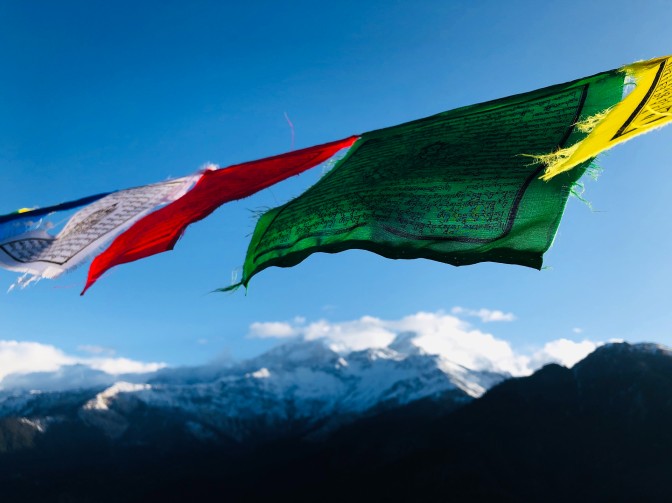
Admire the spiritual atmosphere as colorful religious flags flutter in the wind, set against the majestic backdrop of towering mountain peaks.
Do I need a guide or porter for the Annapurna Base Camp Trek?
You can trek to Annapurna Base Camp without a guide or porter because the trail is easy to follow. But hiring one can make your trek easier and more enjoyable. A guide will help you find your way and share information about the area's culture and nature. A porter can carry your gear so you can focus on enjoying the trek. Hiring them also supports the local economy and creates jobs. Make sure to choose a reliable guide or porter and treat them well during your trek..
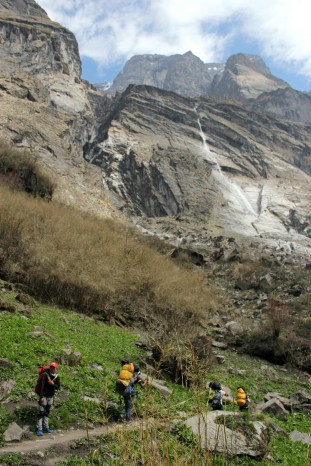
Experience the breathtaking beauty of the Annapurna trails, where every step unveils stunning landscapes, serene paths, and a journey to remember.
What if I cancel my Annapurna Base Camp Trek, will I get a refund?
If you decide to cancel your Annapurna Base Camp trek, the refund process will depend on the policies of the trekking agency you booked through. It's important to carefully review their cancellation terms before making your reservation.
Typically, these policies involve two main factors: a notice period and a cancellation fee. The notice period refers to how far in advance you need to notify them of your cancellation, usually around 30 days or more before your trek starts. If you cancel closer to your departure date, the cancellation fee, which is a percentage of the total trip cost, tends to be higher.
Some agencies might offer a lifetime deposit policy, allowing you to transfer your deposit to another trip or even to someone else if you need to cancel due to unforeseen circumstances.
Keep in mind that policies can vary, so it's wise to confirm the most current details, especially regarding changes in seasons and availability of accommodations. If you have any questions about their policies or need further assistance, don't hesitate to contact the Vajra Adventure directly.
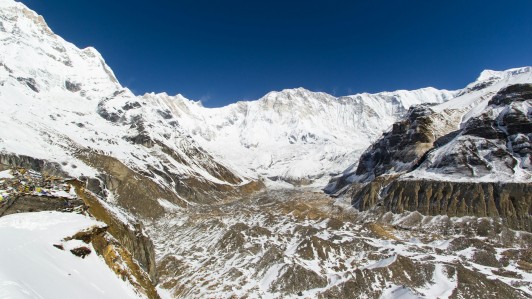
Walk along snow covered trails surrounded by majestic mountains, offering a serene and unforgettable trekking experience.
Popular Packages of Annapurna Region
Recent Blog Posts
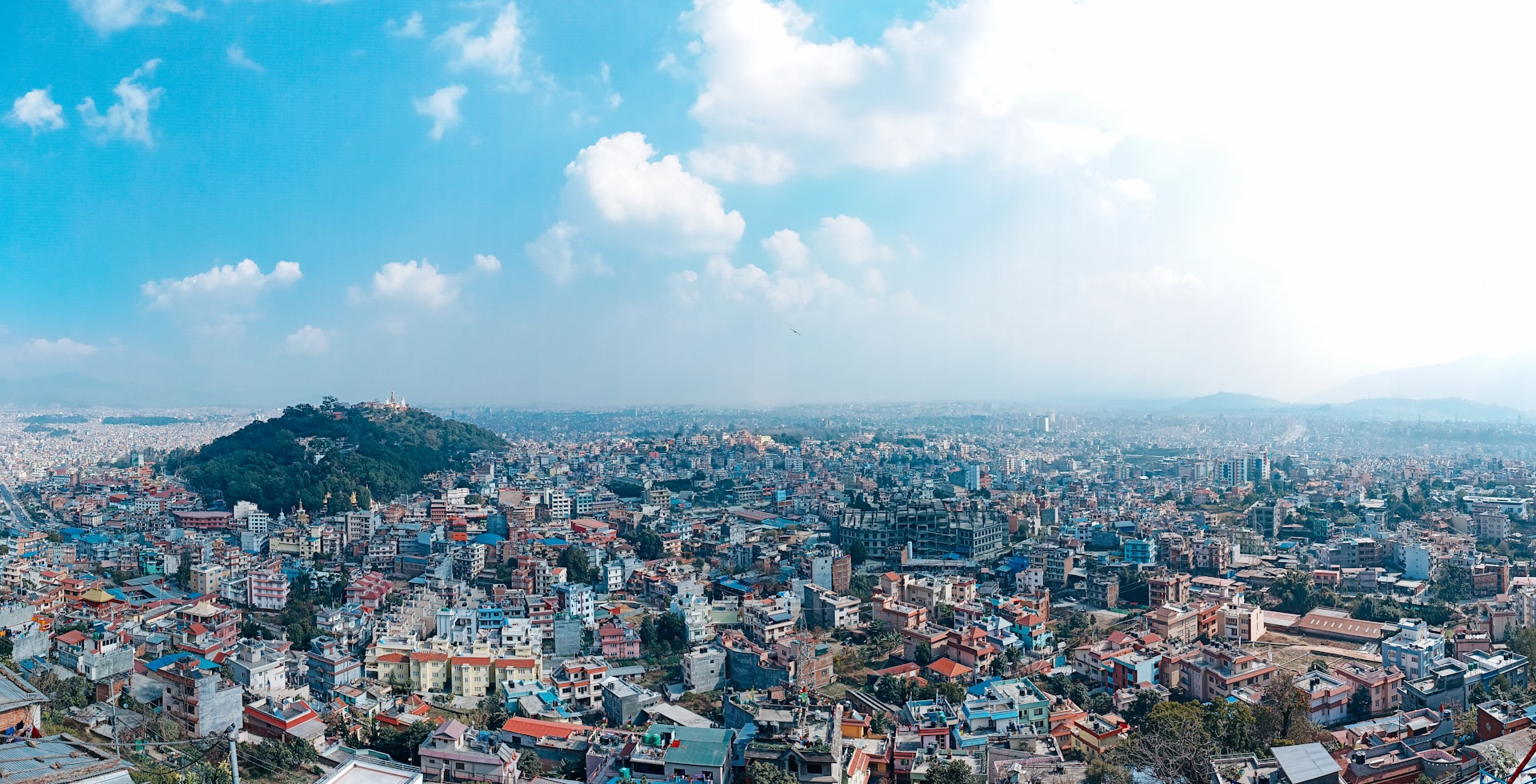
Kathmandu Valley: Exploring the Capital of Nepal
Jun 15, 2025
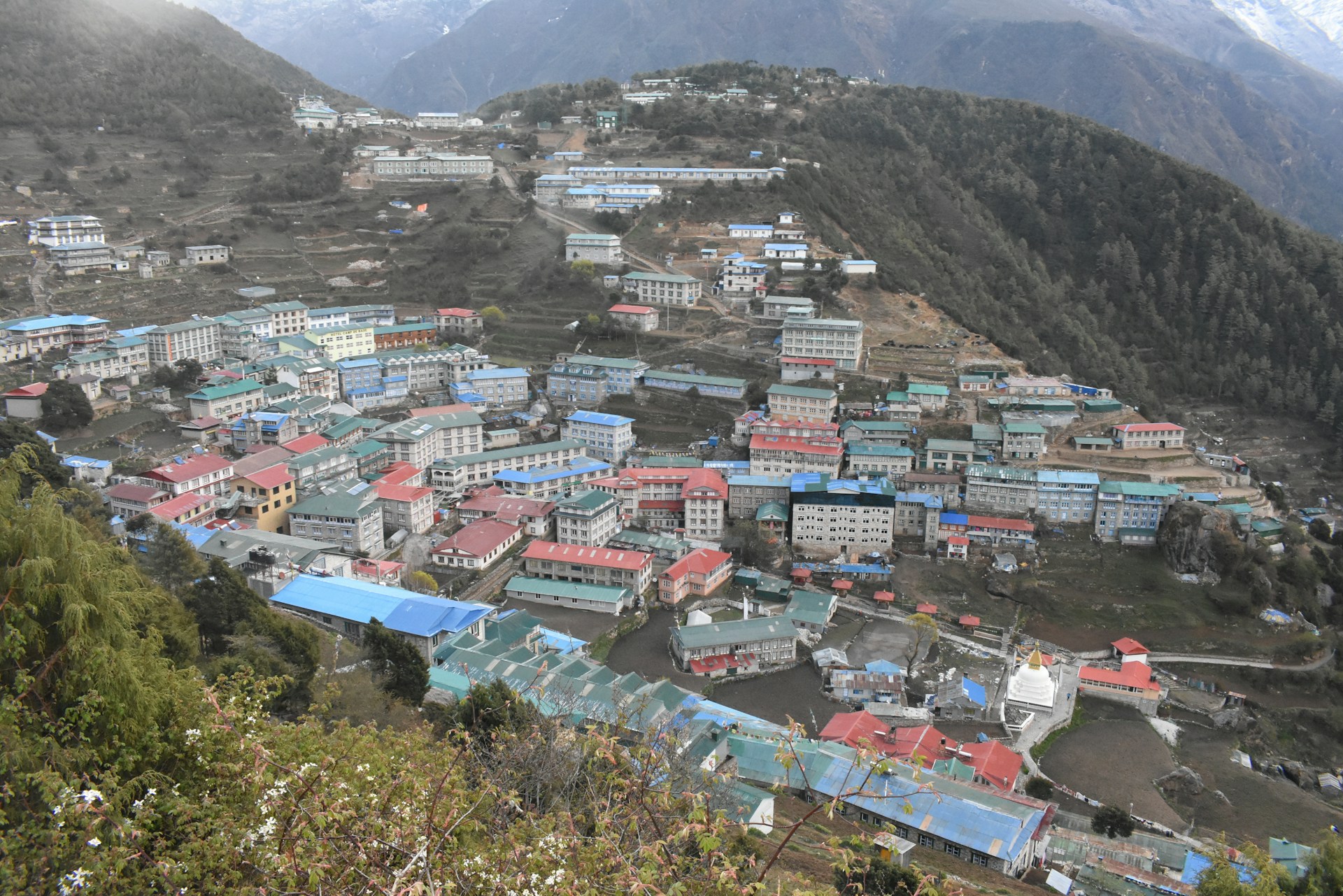
Namche Bazaar: What to Expect in the Sherpa Capital
May 20, 2025
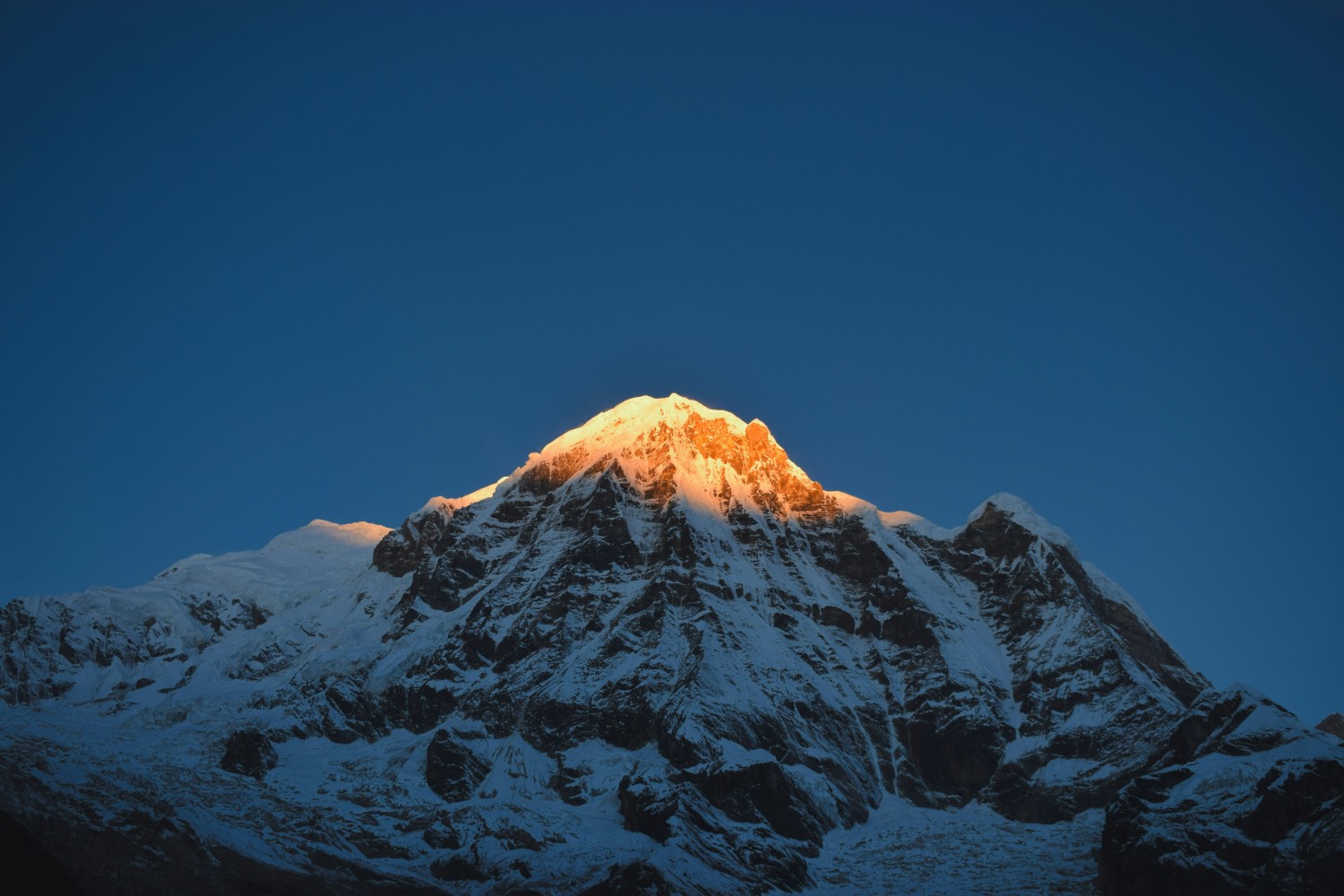
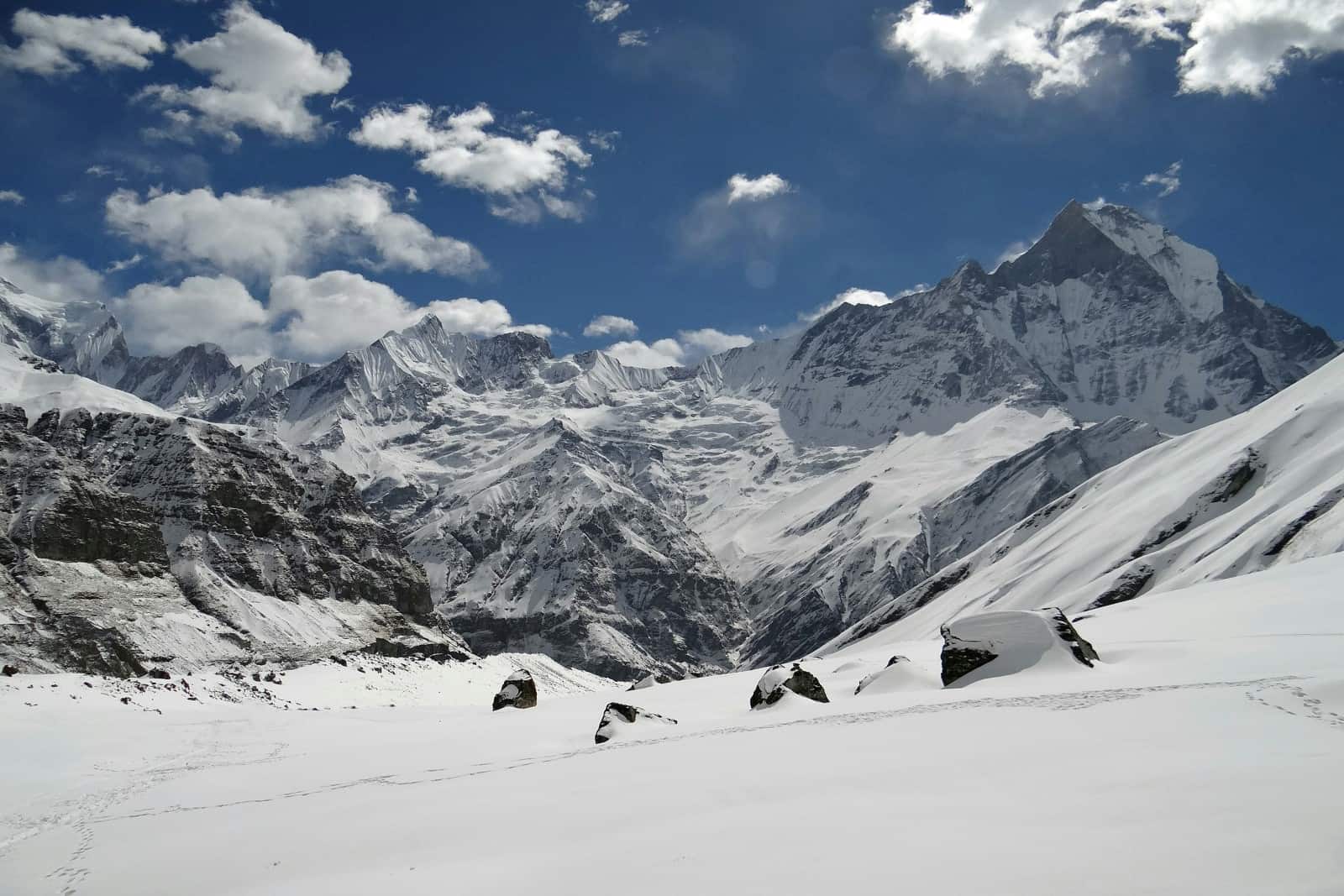

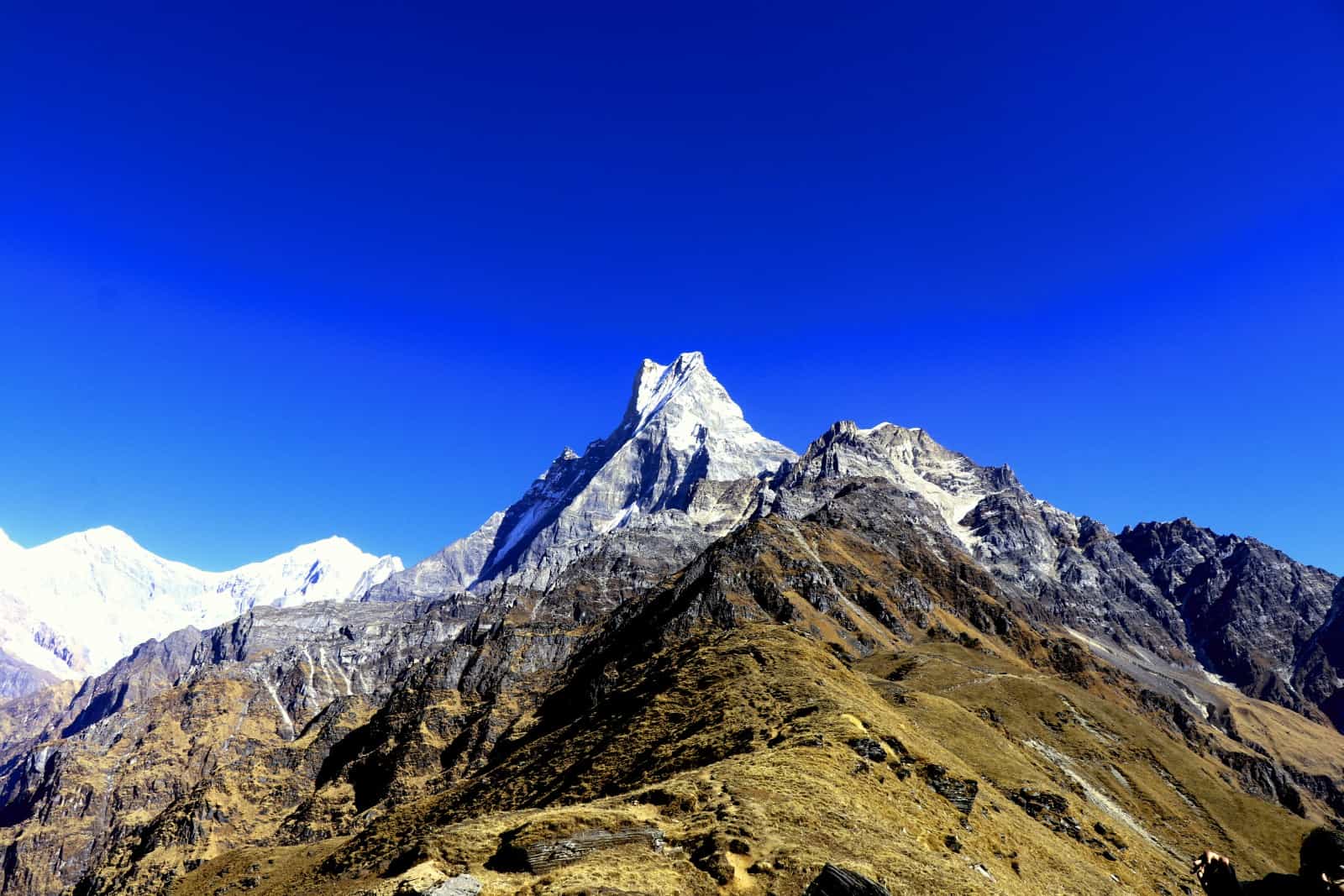
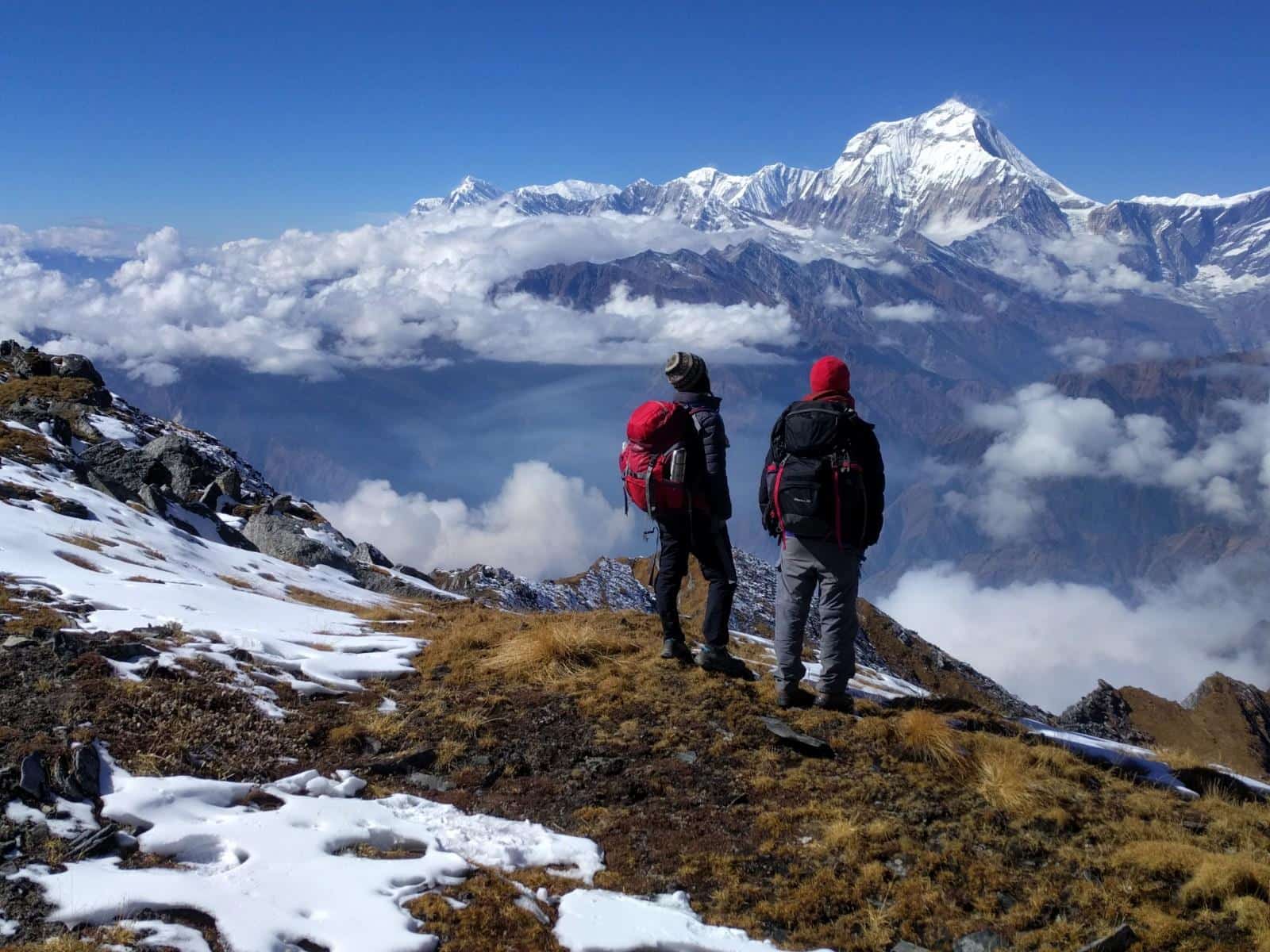
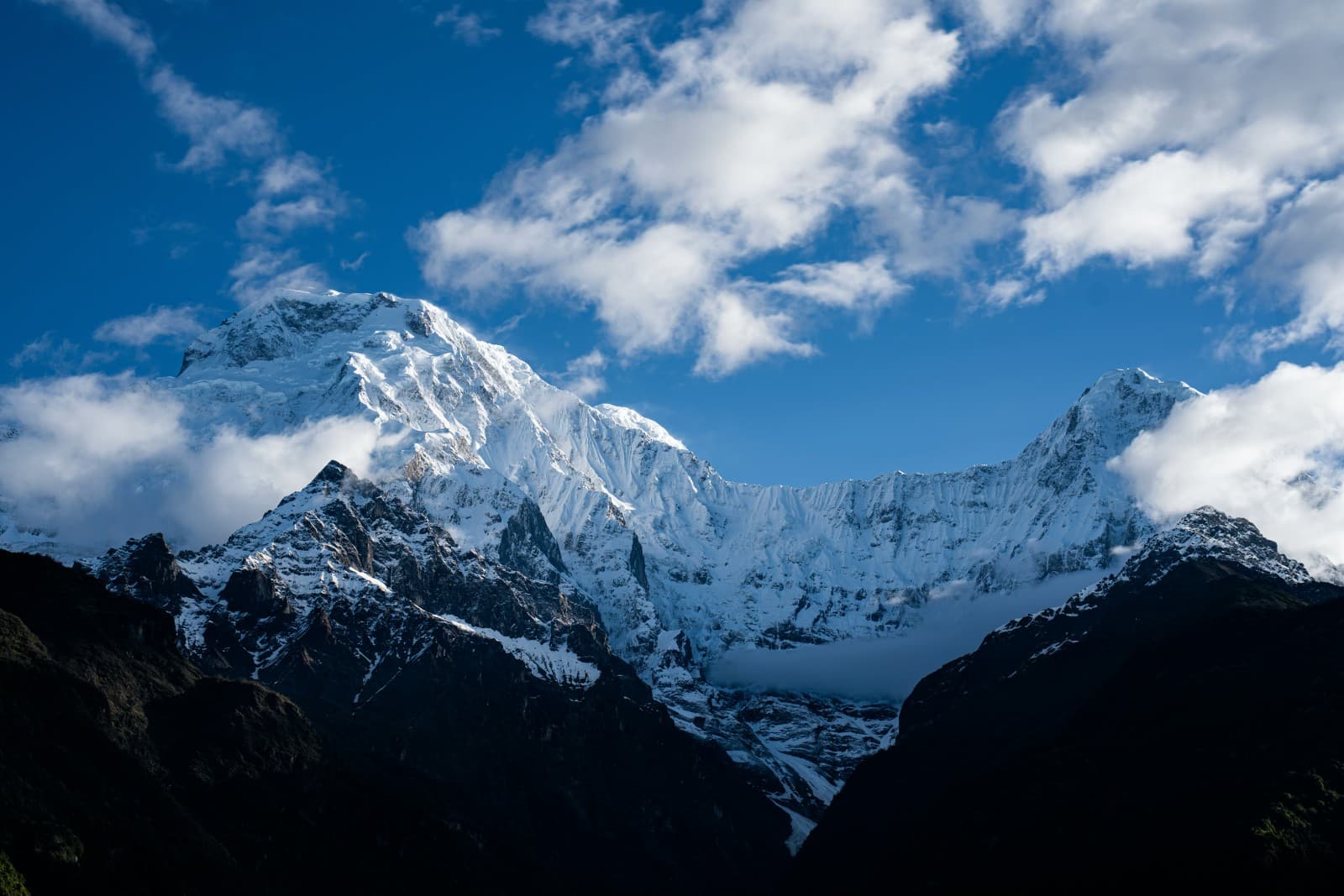
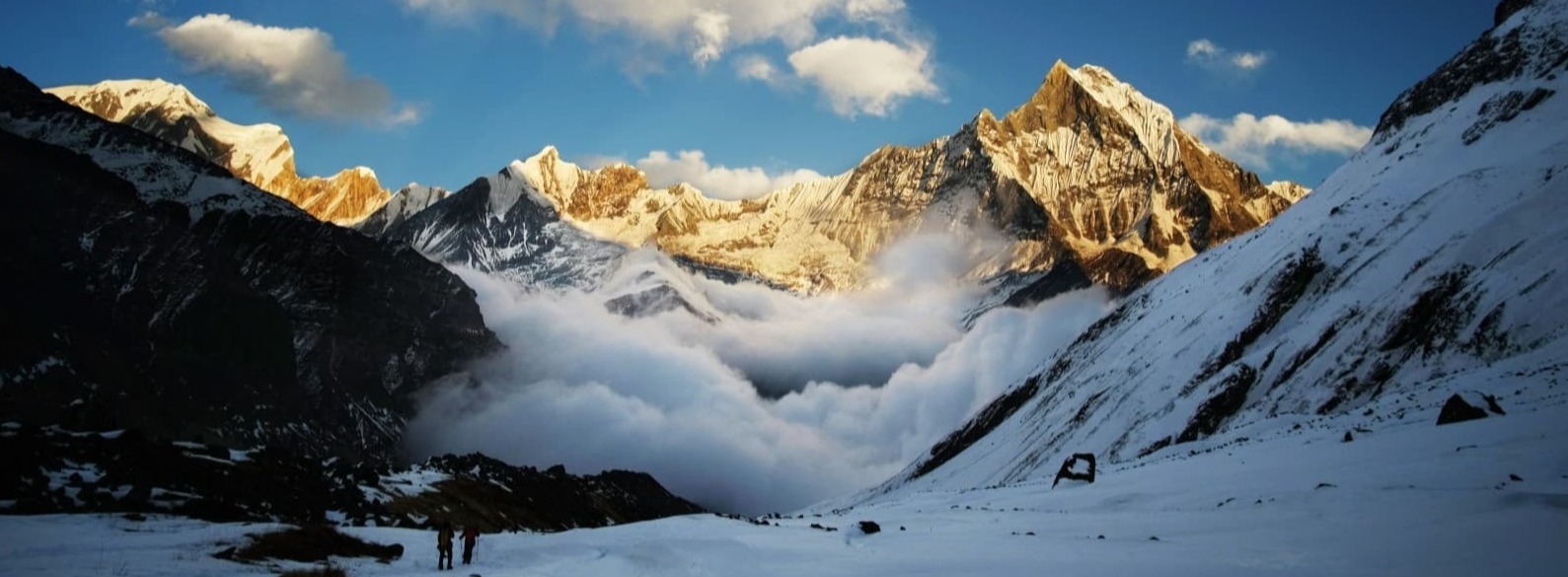
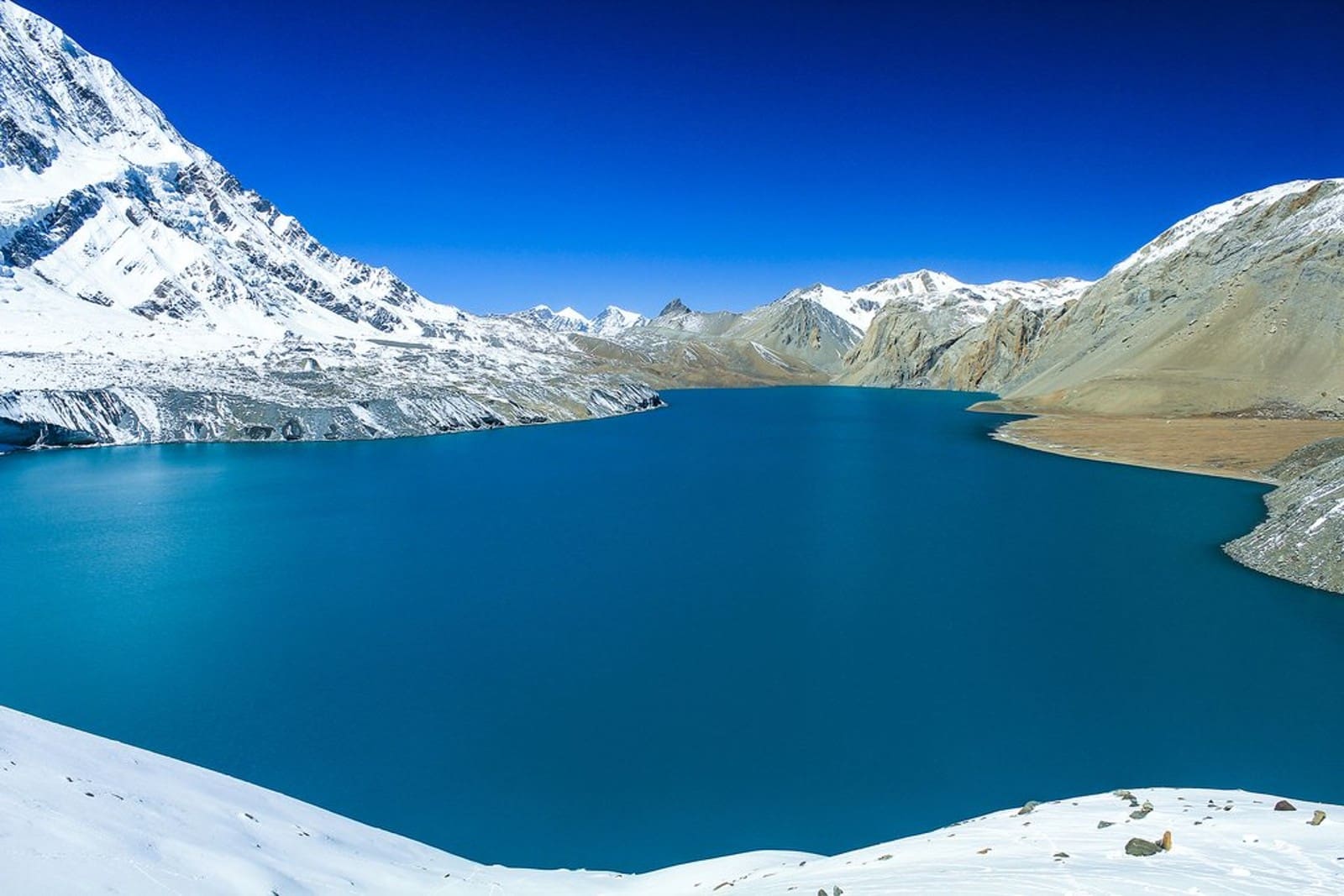
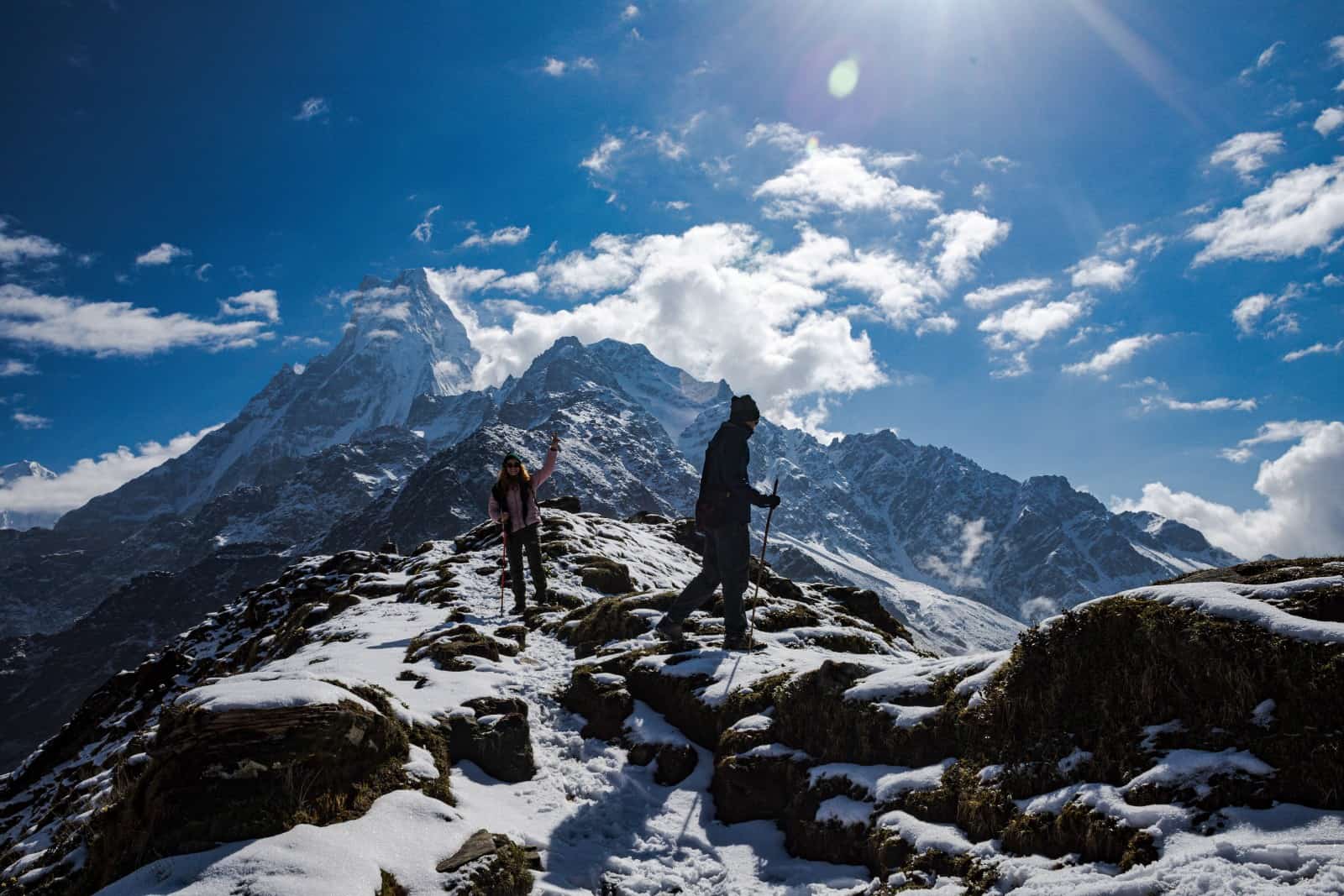
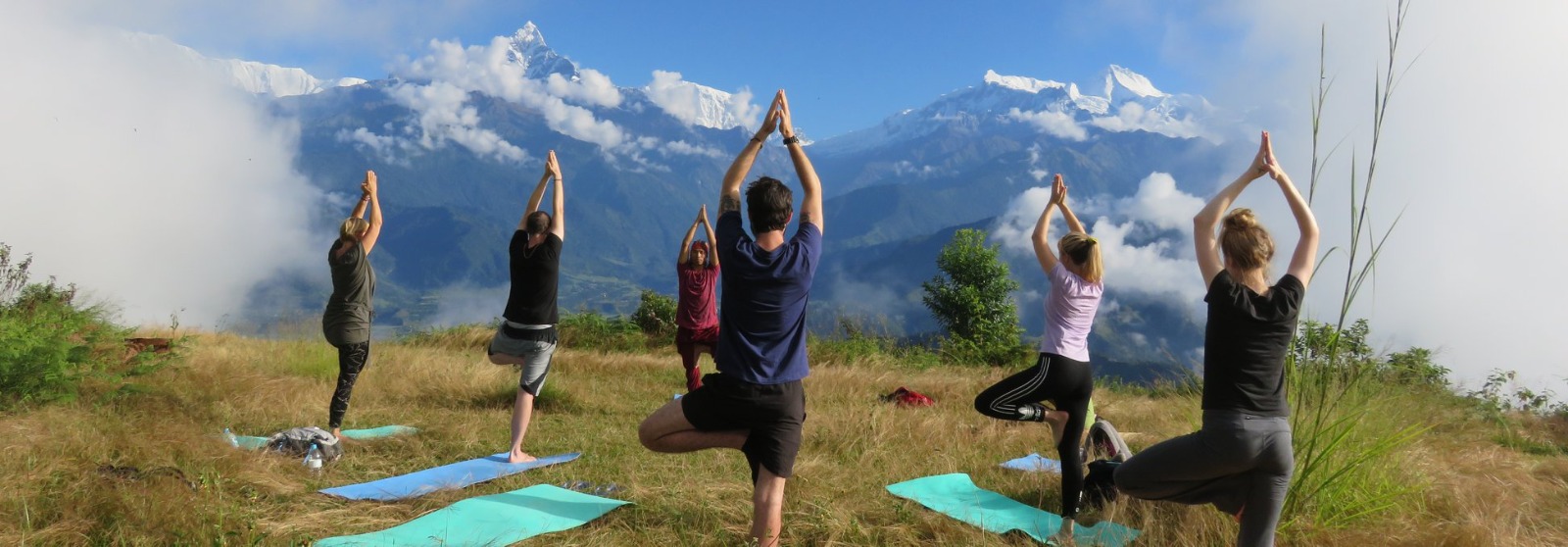
.jpg)

